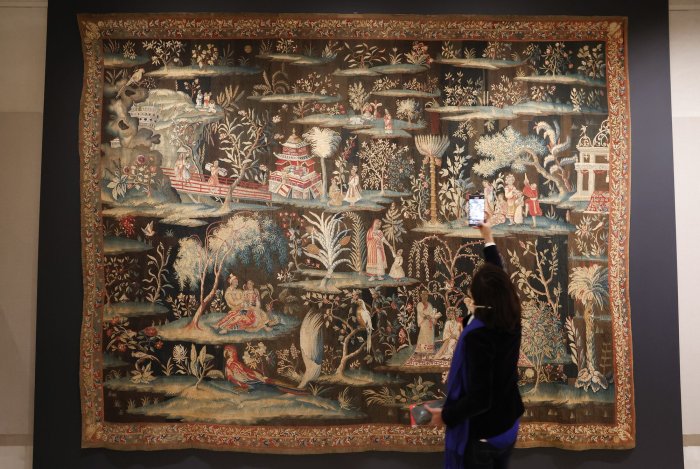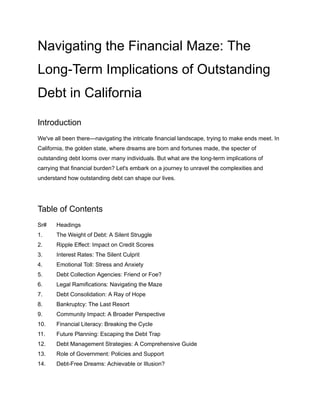Monstrous Beauty: A Feminist Reinterpretation Of Chinoiserie At The Met

Table of Contents
The Exoticization of the "Orient" in Chinoiserie
The creation and collection of Chinoiserie pieces were deeply intertwined with the European gaze, a lens shaped by colonialism and a desire to exoticize the "Orient." This gaze, inherently unequal, shaped the representation of China and its people in ways that reinforced existing power structures.
The Gaze of the Collector
European collectors and artists, driven by curiosity and a thirst for the exotic, often viewed China through a romanticized and ultimately distorted lens. This resulted in representations that frequently ignored the complexities of Chinese culture and instead projected fantasies and stereotypes onto the objects and subjects depicted.
- Objectification: Many Chinoiserie pieces portray Chinese figures as passive objects, devoid of agency and existing solely for the visual pleasure of the European viewer. Consider, for example, the numerous porcelain figurines depicting submissive women, often in highly stylized and revealing attire.
- Fantasy and Stereotype: The portrayal of China in Chinoiserie often relied heavily on existing European stereotypes, constructing a fictionalized and idealized version of the country that served to reinforce existing prejudices. These stereotypes frequently involved exotic landscapes, mythical creatures, and stylized representations of everyday life, often ignoring the realities of social structures and political systems.
- The Construction of the "Other": Chinoiserie participated in the broader colonial project of constructing the "Other"—defining China as fundamentally different and inferior to Europe, thereby justifying the economic and political dominance of European powers. This "othering" process was crucial in legitimizing trade imbalances and the exploitation of resources.
The Female Figure in Chinoiserie
The female figure in Chinoiserie is particularly revealing of this exoticizing gaze. Women are often depicted as passive, exotic, and hyper-sexualized, reinforcing existing patriarchal notions of femininity both within Europe and projected onto a romanticized "Oriental" culture.
- Artistic Choices: The artistic choices made in depicting women—their poses, clothing, and settings—carefully reinforce this image. Women are often portrayed in languid poses, wearing elaborate and revealing clothing, and situated within fantastical landscapes. These choices actively contribute to their exoticization and objectification.
- Historical Inaccuracies: Comparing these representations to actual historical accounts of women in China reveals a significant discrepancy. The idealized and often submissive images presented in Chinoiserie bear little resemblance to the diverse realities of women's lives in China during the relevant historical periods.
Subverting the Narrative: Feminist Interpretations of Chinoiserie
While acknowledging the problematic aspects of Chinoiserie, a feminist reinterpretation allows us to uncover potential instances of resistance and agency within the art itself. This approach challenges the traditional, often colonialist, reading of these objects.
Reclaiming the Gaze
Feminist perspectives invite us to question the established power dynamics inherent in the creation and consumption of Chinoiserie. By shifting our focus, we can find traces of agency and defiance that might have been overlooked in traditional interpretations.
- Reinterpreting Strength: Certain artworks, initially interpreted as simply decorative, might be re-examined to reveal subtle displays of female strength or resilience. Careful analysis of body language, facial expressions, and symbolic details can unearth hidden meanings.
- The Viewer's Role: The meaning of Chinoiserie is not fixed; it is actively shaped by the viewer's perspective. A feminist reading allows for a more nuanced and critical engagement with the art, challenging established interpretations and fostering new understandings.
Beyond the Porcelain Doll: Uncovering Hidden Meanings
Moving beyond the surface aesthetics, a deeper analysis of Chinoiserie reveals underlying social and political contexts. This approach unveils the complexities of cultural exchange and the inherent power imbalances involved.
- Symbolism and Motifs: The patterns and motifs found in Chinoiserie are not mere decoration; they are laden with symbolism that can be reinterpreted through a feminist lens. Analysis of these symbols, in conjunction with their historical context, can reveal subtle critiques of power structures or expressions of resistance.
- Colonialism and Appropriation: Chinoiserie cannot be fully understood without considering the broader context of colonialism and cultural appropriation. Acknowledging this context allows us to address the problematic aspects of the art form and engage in a more critical discussion of its legacy.
The Met's Role in Presenting Chinoiserie
The Metropolitan Museum of Art, as a major institution, plays a significant role in shaping public understanding of Chinoiserie. How the Met presents its collection, including the accompanying text and contextual information, is crucial in determining how viewers interpret these objects.
Curatorial Choices and Contextualization
The Met's curatorial choices, including the selection of pieces displayed and the accompanying information, influence how visitors understand Chinoiserie. Examining the exhibition labels and accompanying materials reveals how the museum frames its collection and its narratives surrounding the artworks.
- Bias in Display: The way objects are displayed can subtly reinforce or challenge existing biases. A critical examination of display choices, such as the placement of objects and accompanying descriptions, reveals how the Met’s presentation might subtly reinforce existing power dynamics.
- Contextual Information: Adequate contextual information is crucial in shaping viewer understanding. The Met’s accompanying materials should address the historical context of colonialism and cultural appropriation, helping viewers to navigate the complex relationship between the artworks and their historical significance.
The Potential for a More Inclusive Narrative
The Met has an opportunity to improve its presentation of Chinoiserie to reflect more inclusive and critical perspectives. This requires a proactive engagement with feminist and postcolonial scholarship.
- Updated Labels and Descriptions: Revising exhibition labels and descriptions to incorporate feminist and postcolonial perspectives is essential in presenting a more nuanced understanding of the collection.
- Educational Programs: The Met could develop educational programs and workshops that encourage critical engagement with Chinoiserie and facilitate discussions about the problematic aspects of this art form.
- Collaboration: Collaboration with scholars and artists from diverse backgrounds, including those with expertise in Chinese history and art, is crucial in developing a more inclusive and accurate presentation of the collection.
Conclusion
The Metropolitan Museum of Art's Chinoiserie collection offers a rich and complex case study for understanding cultural exchange and representation. By adopting a feminist lens, we can move beyond the surface beauty to uncover the "monstrous" aspects of this art form—the power imbalances, the exoticization, and the erasure of diverse voices. The Met has a responsibility to present a more nuanced and inclusive narrative around its Chinoiserie collection, actively engaging with critical perspectives and fostering a richer understanding of this fascinating and problematic art form. Further exploration of Chinoiserie at the Met, particularly through a feminist perspective, is crucial for a complete and informed understanding of art history and its impact. Let's continue to examine Chinoiserie at the Met with a critical eye, challenging conventional interpretations and embracing a more inclusive and insightful approach.

Featured Posts
-
 Denny Hamlins Popularity Soars With Michael Jordans Backing
Apr 28, 2025
Denny Hamlins Popularity Soars With Michael Jordans Backing
Apr 28, 2025 -
 Luigi Mangione A Deep Dive Into His Supporters Motivations
Apr 28, 2025
Luigi Mangione A Deep Dive Into His Supporters Motivations
Apr 28, 2025 -
 Fishermans Stew World Renowned Chefs Culinary Masterpiece Wins Over Eva Longoria
Apr 28, 2025
Fishermans Stew World Renowned Chefs Culinary Masterpiece Wins Over Eva Longoria
Apr 28, 2025 -
 Revealed The Financial Ramifications Of Musks X Debt Offering
Apr 28, 2025
Revealed The Financial Ramifications Of Musks X Debt Offering
Apr 28, 2025 -
 China Quietly Eases Tariffs On Select Us Goods
Apr 28, 2025
China Quietly Eases Tariffs On Select Us Goods
Apr 28, 2025
